Measurement Worksheets With Answers
Comparing Weight
Grades: Kindergarten
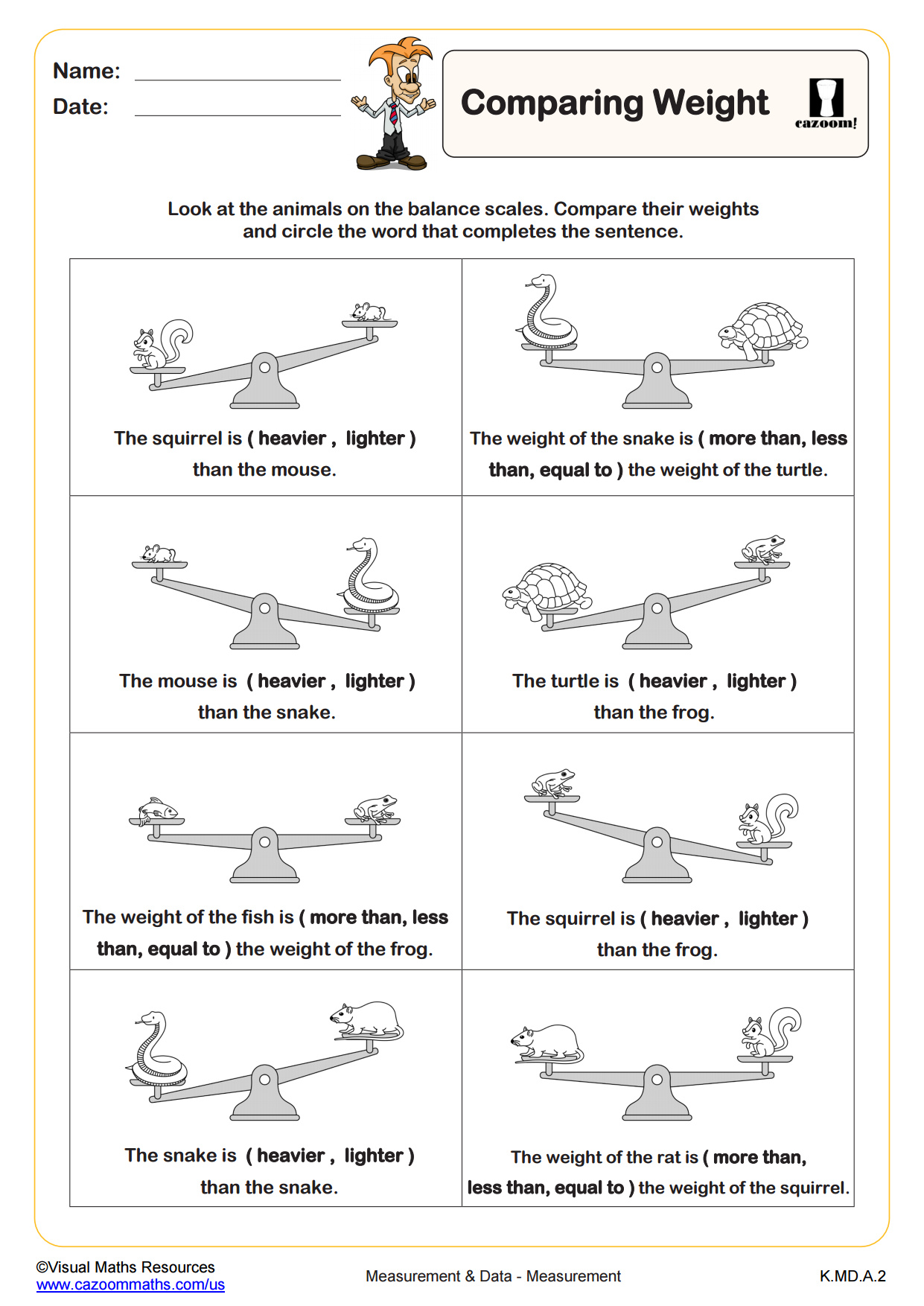
Comparing Heights
Grades: 1st Grade
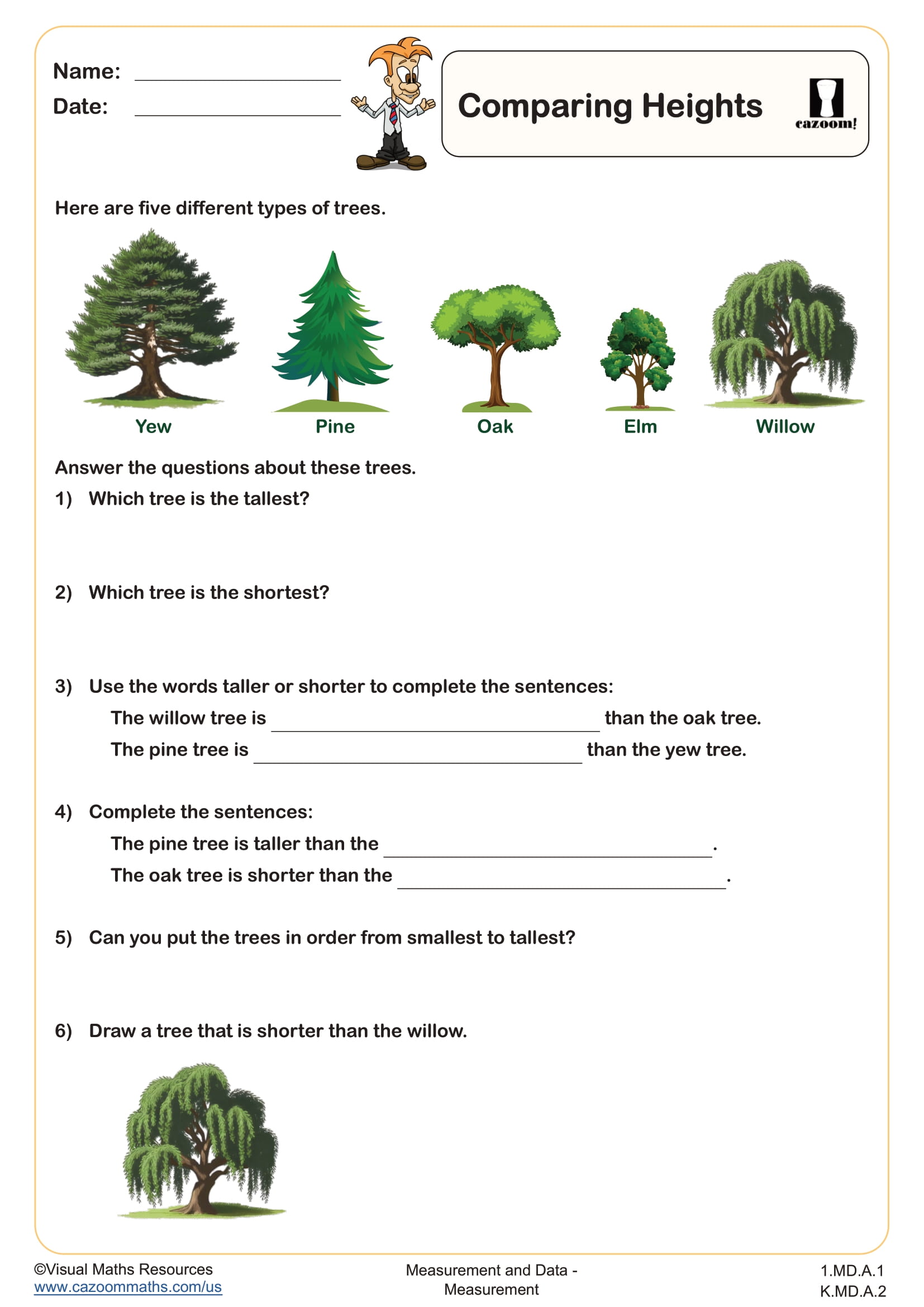
Choosing the Correct Units for Imperial Measure
Grades: 2nd Grade, 3rd Grade
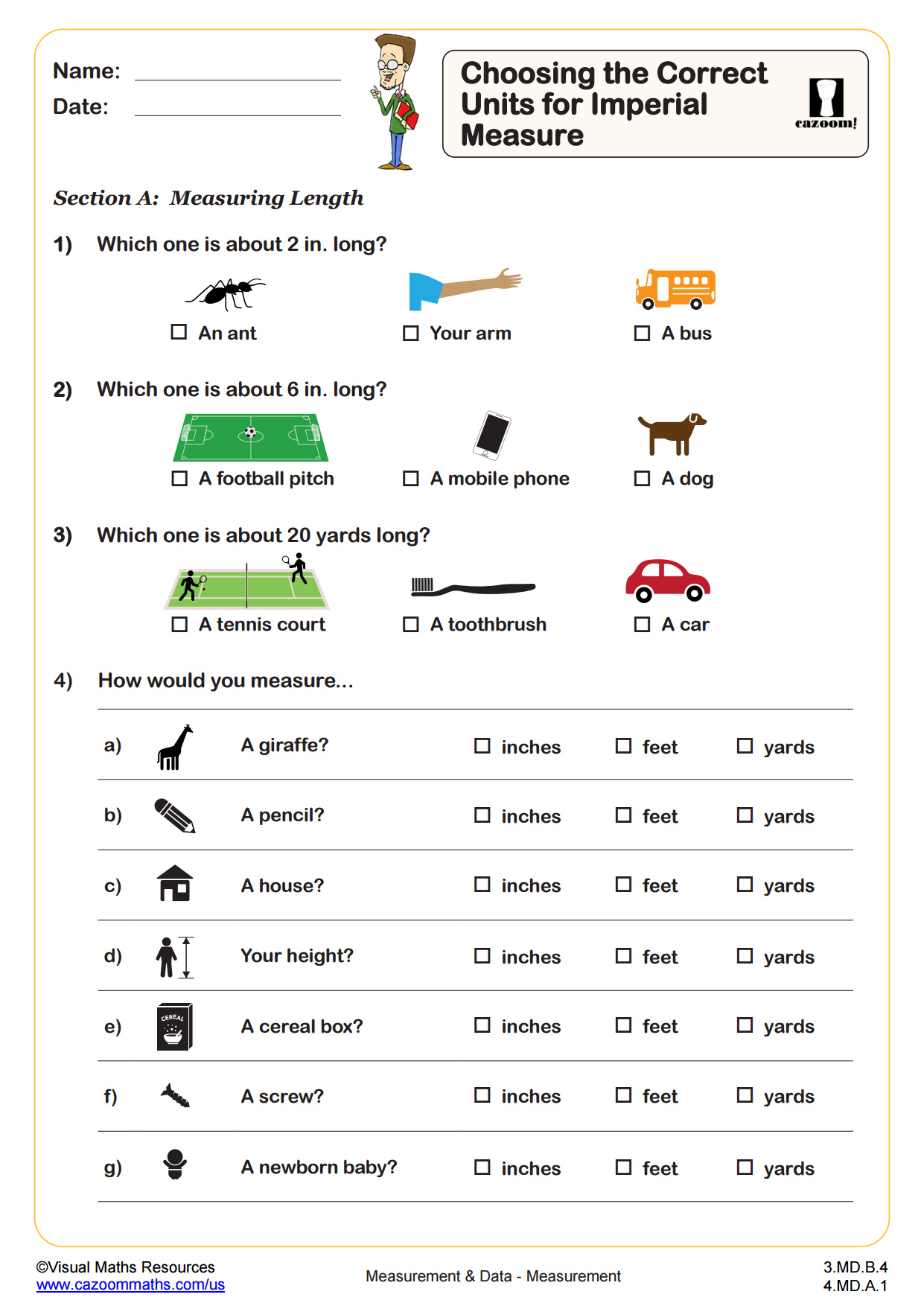
Choosing the Correct Units of Measure
Grades: 2nd Grade, 3rd Grade
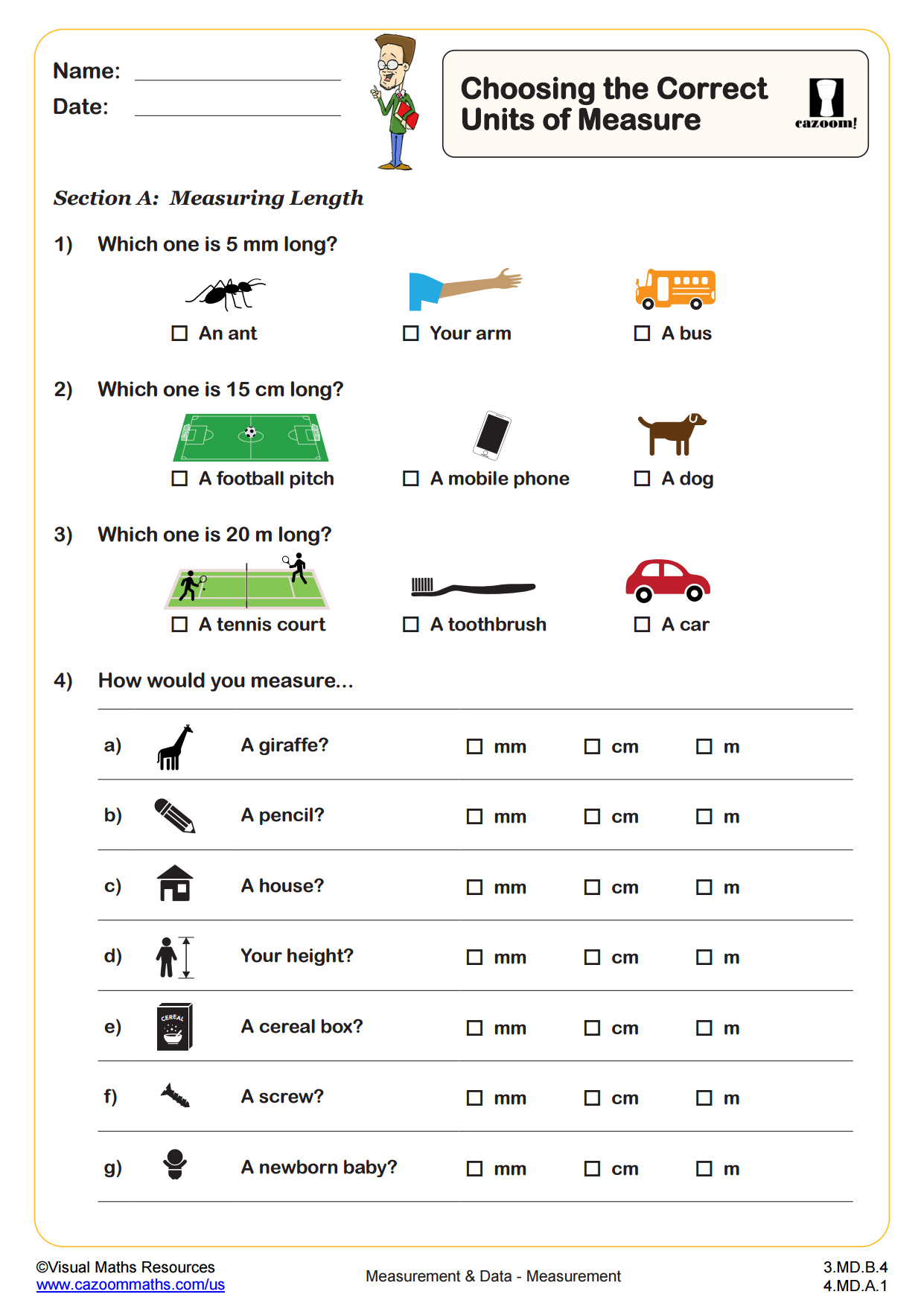
Compare Lengths
Grades: 2nd Grade, 4th Grade
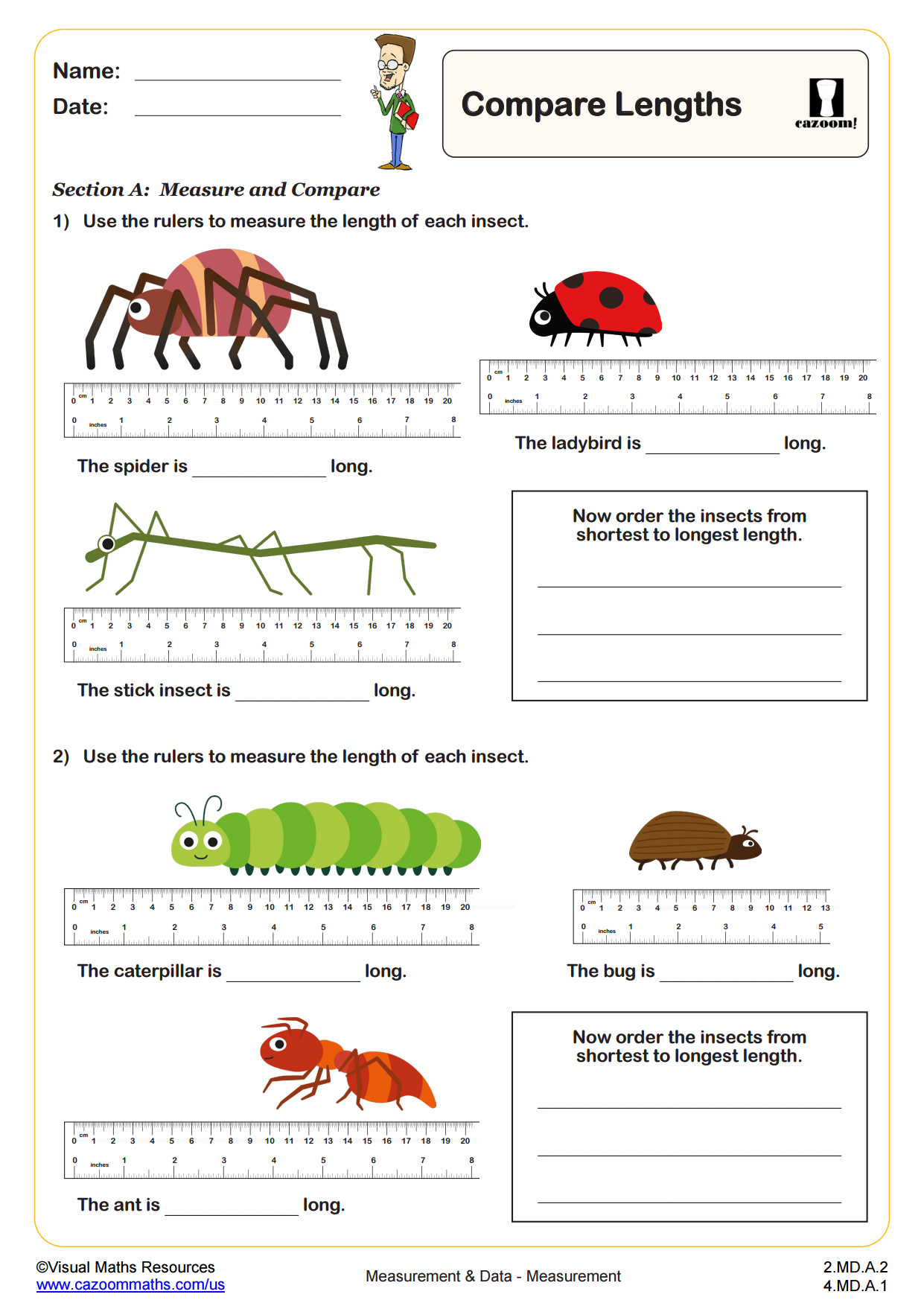
Estimating Metric Measures
Grades: 2nd Grade, 3rd Grade
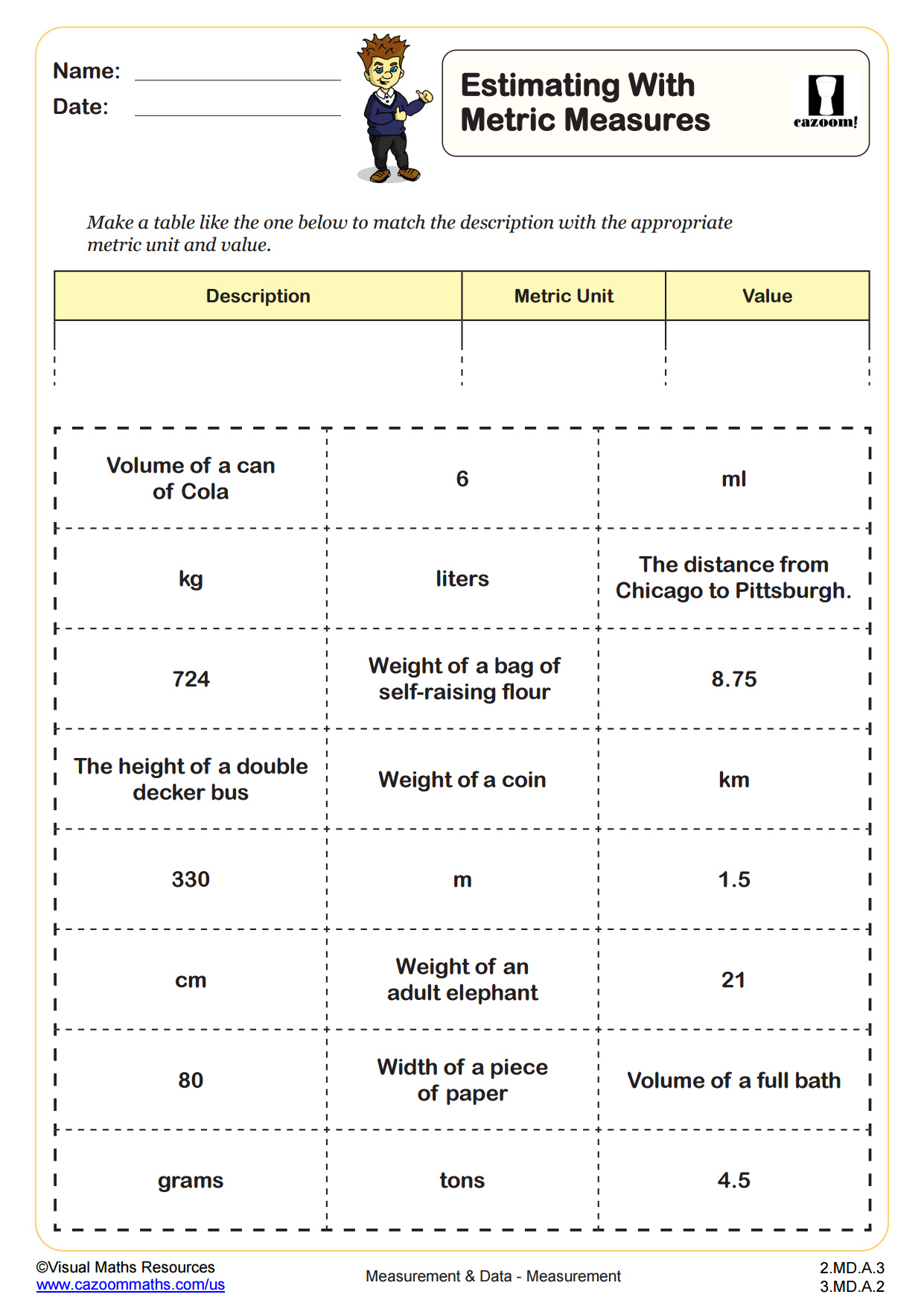
Measuring Length
Grades: 2nd Grade
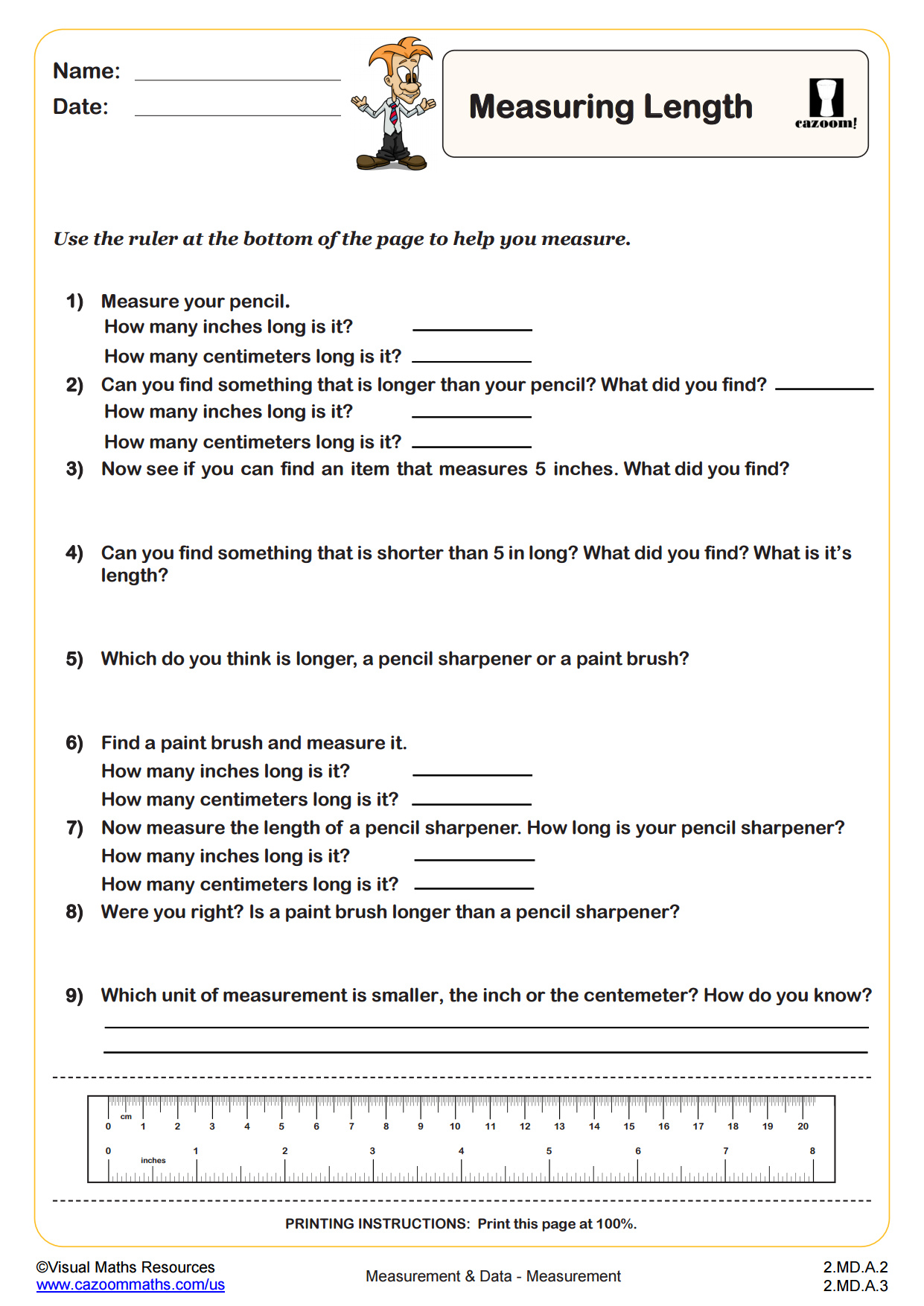
Imperial and Metric Lengths
Grades: 3rd Grade, 4th Grade
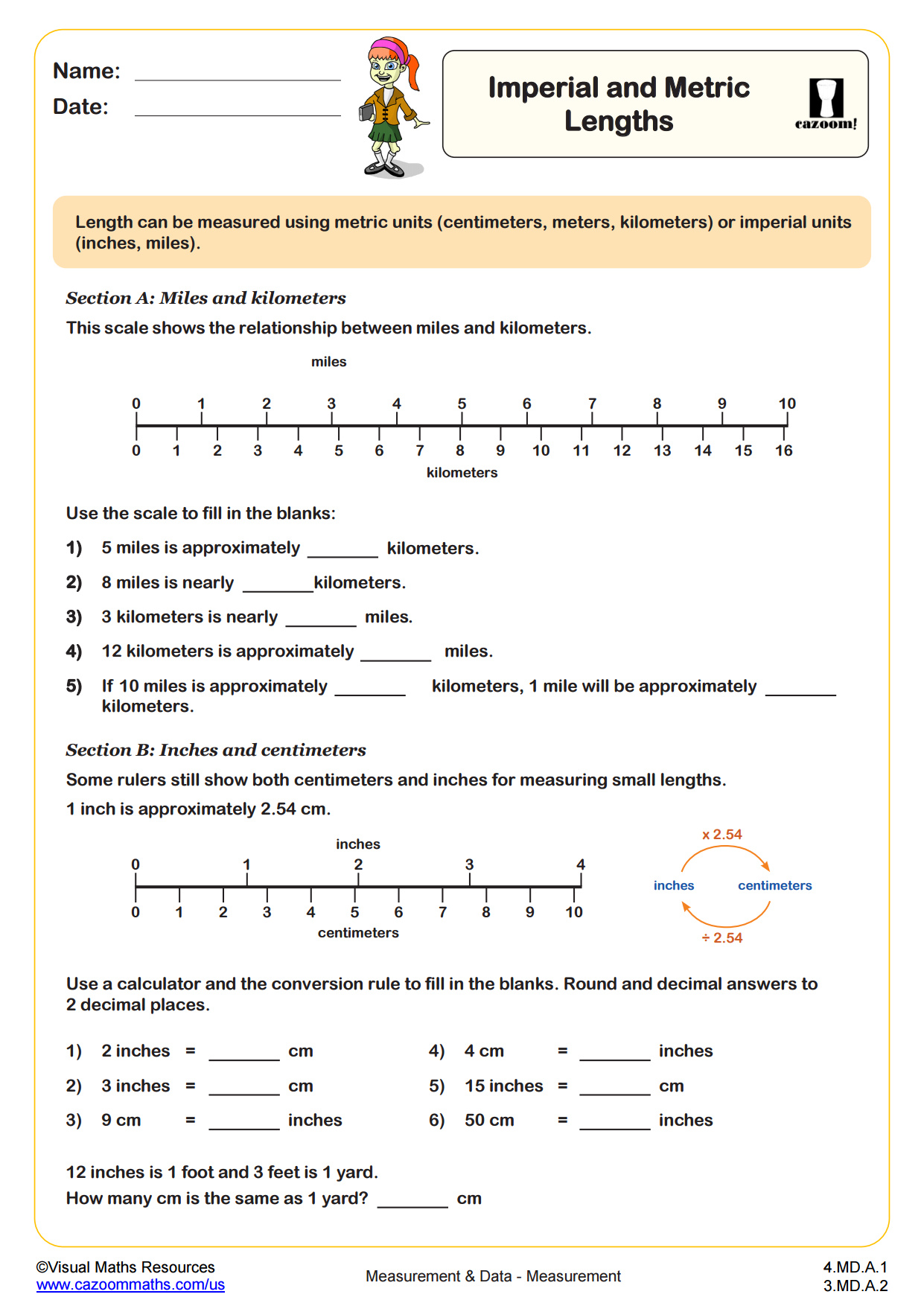
Measure Mass In Grams (A)
Grades: 3rd Grade
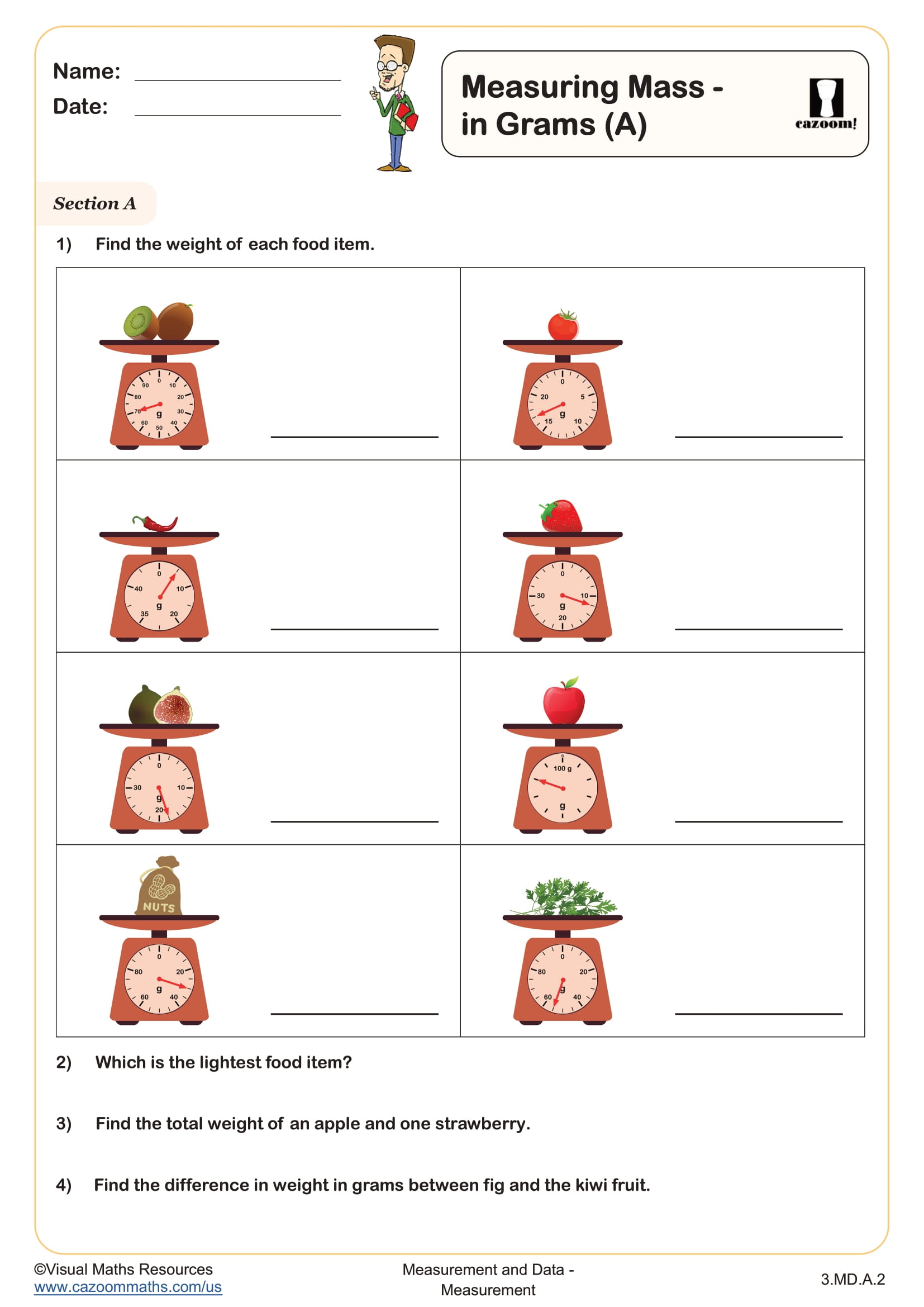
Measure Mass in Kilograms and Grams
Grades: 3rd Grade
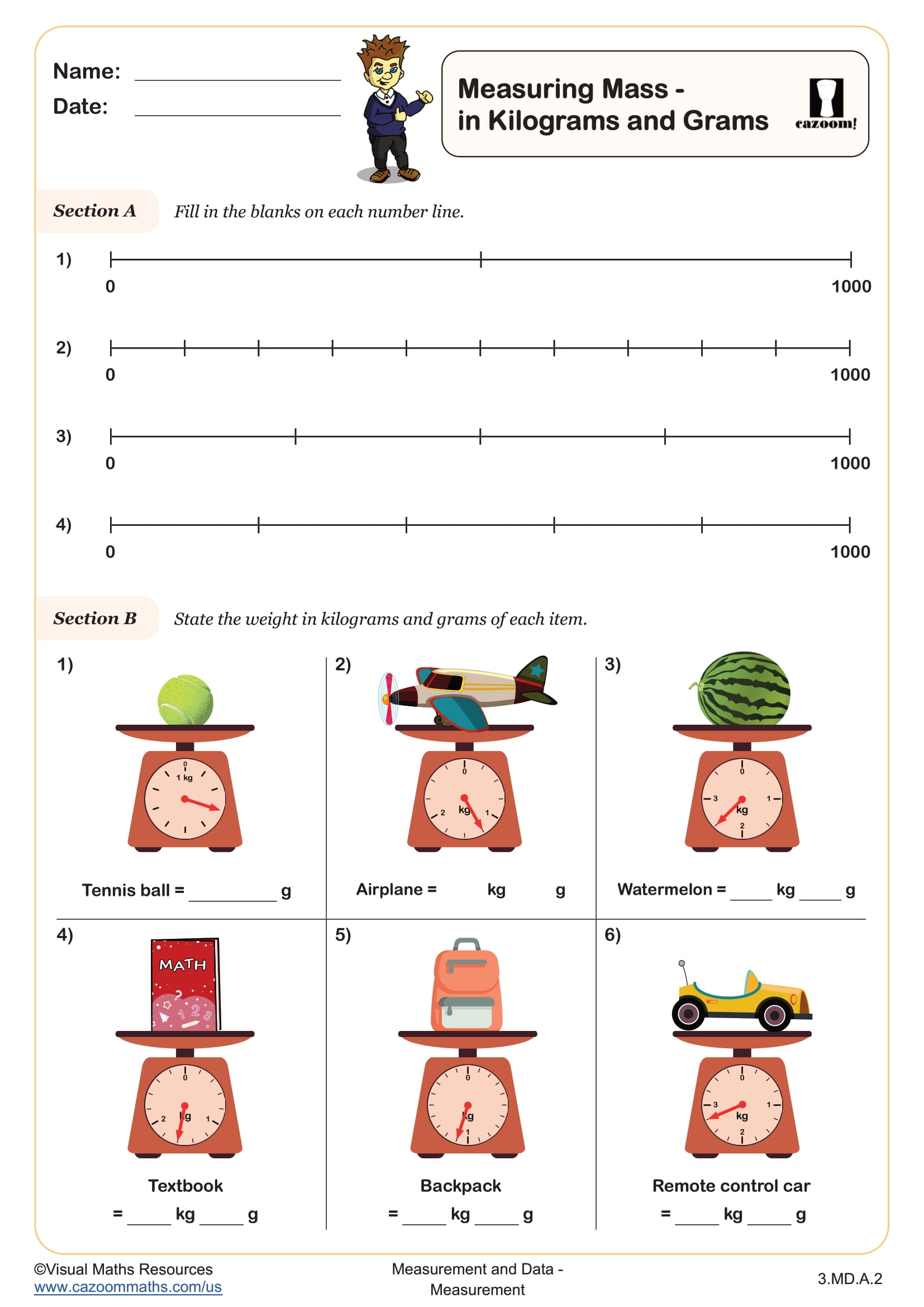
Measuring Mass (B)
Grades: 3rd Grade
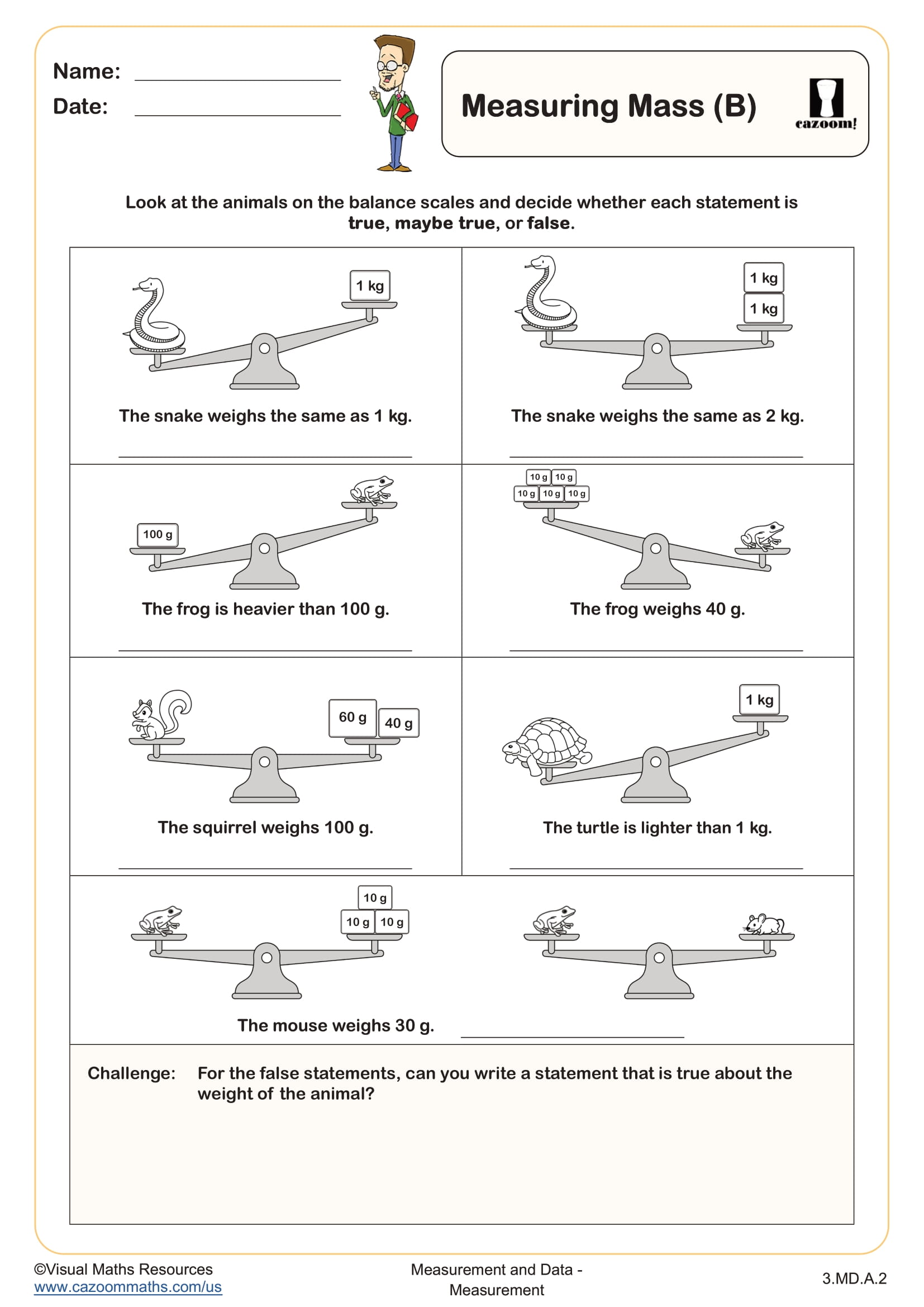
Miles and Kilometres
Grades: 3rd Grade
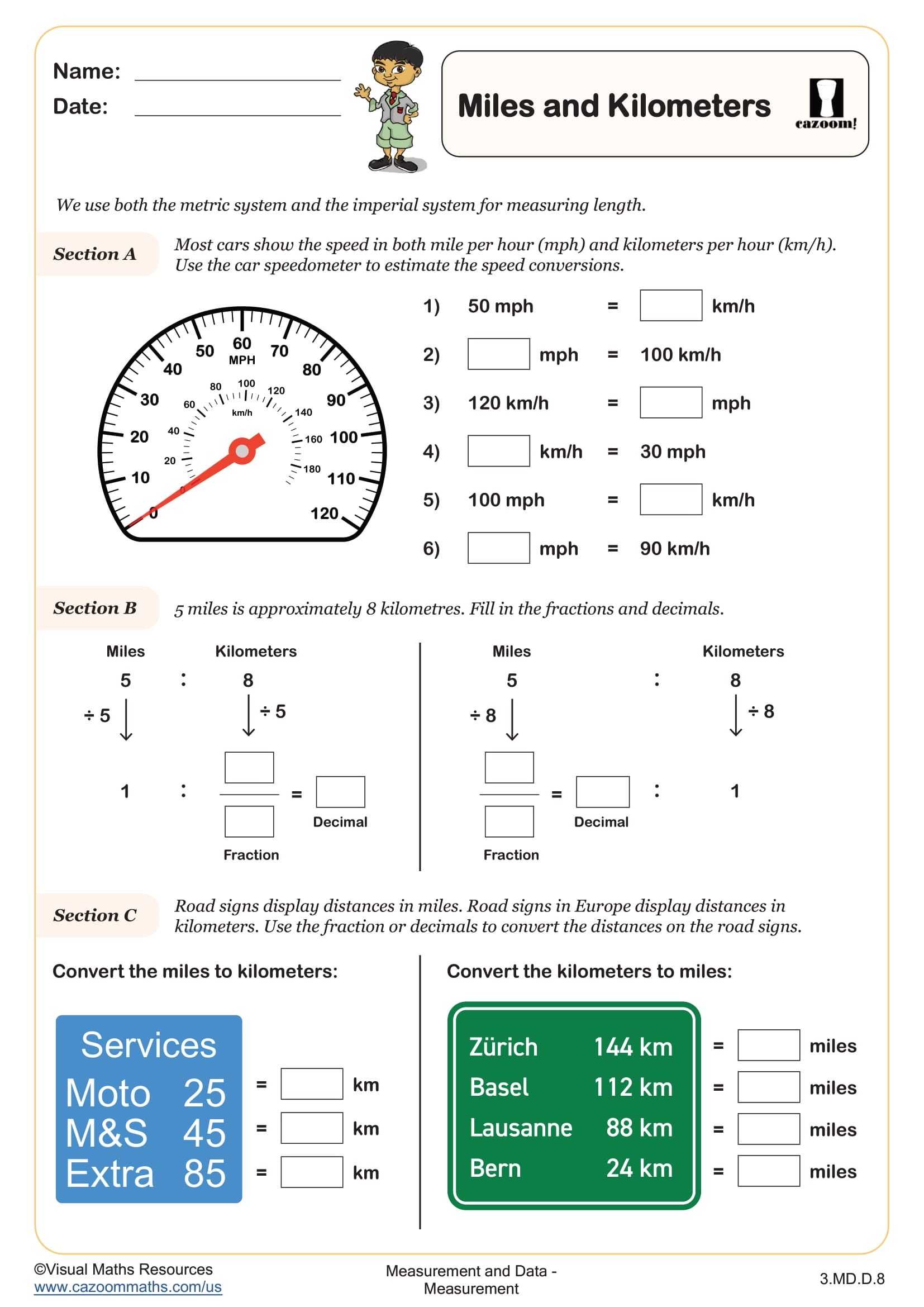
Using Metric Units (A)
Grades: 3rd Grade, 4th Grade
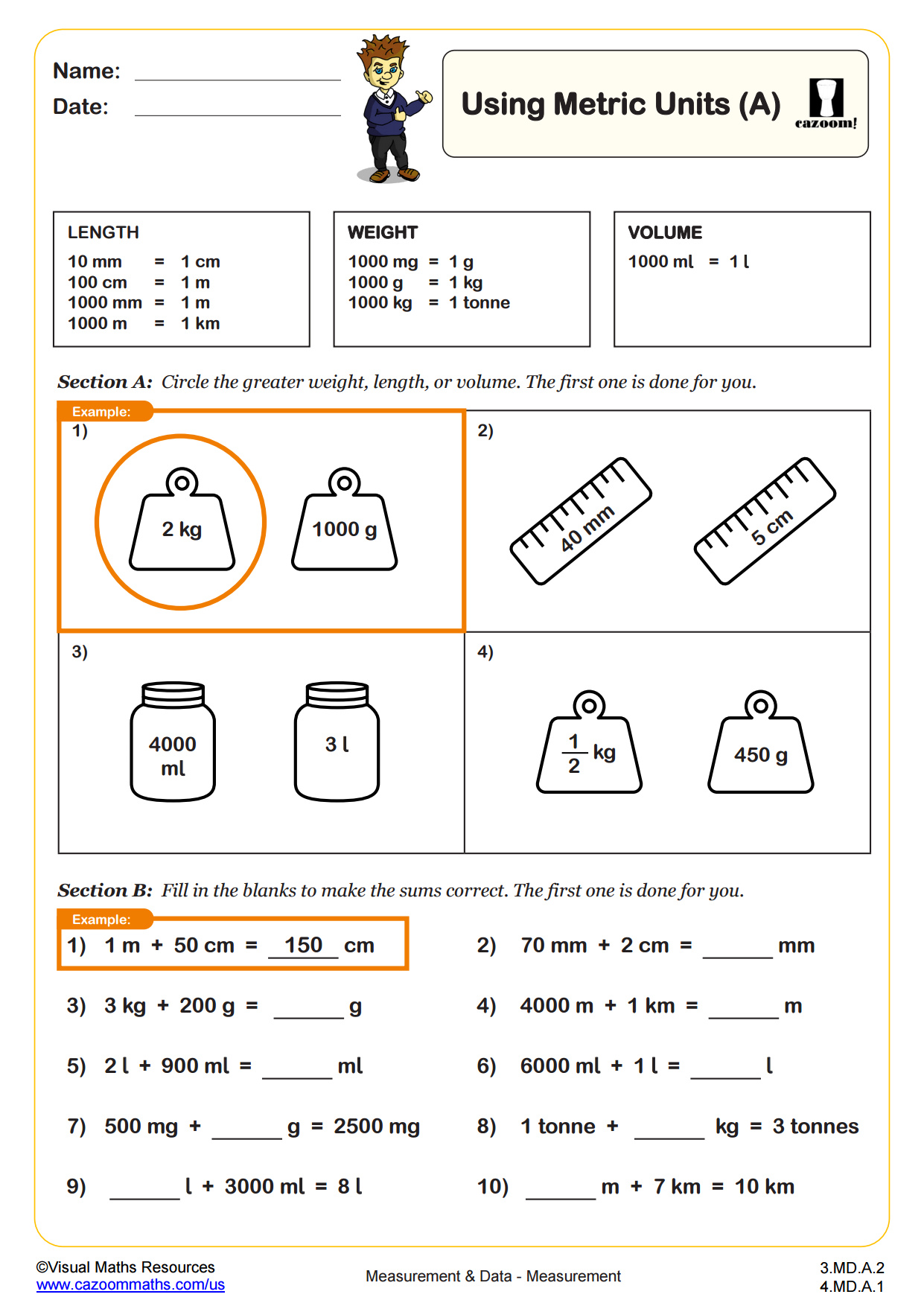
Using Metric Units (B)
Grades: 3rd Grade, 4th Grade
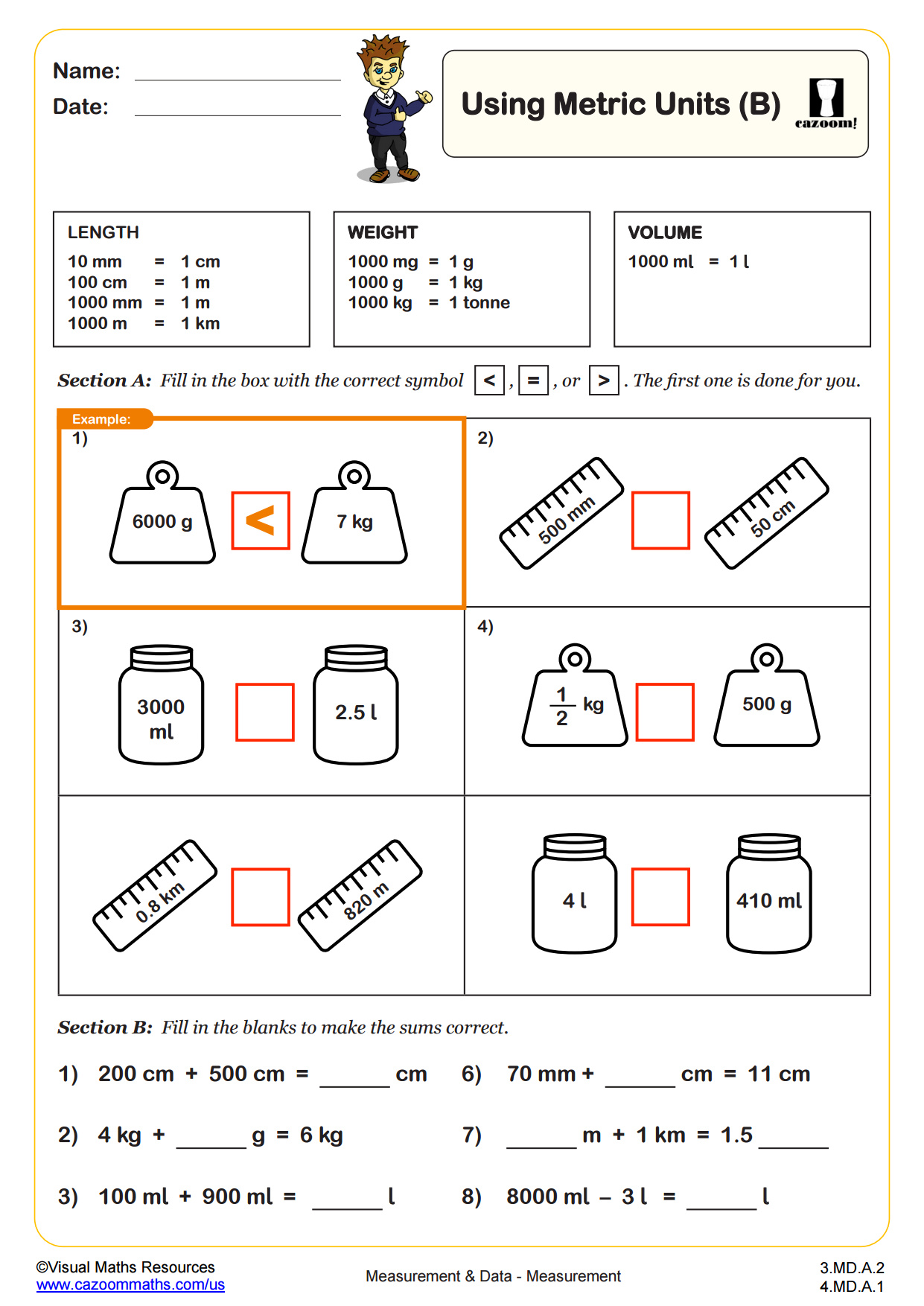
Using Metric Units (C)
Grades: 3rd Grade, 4th Grade
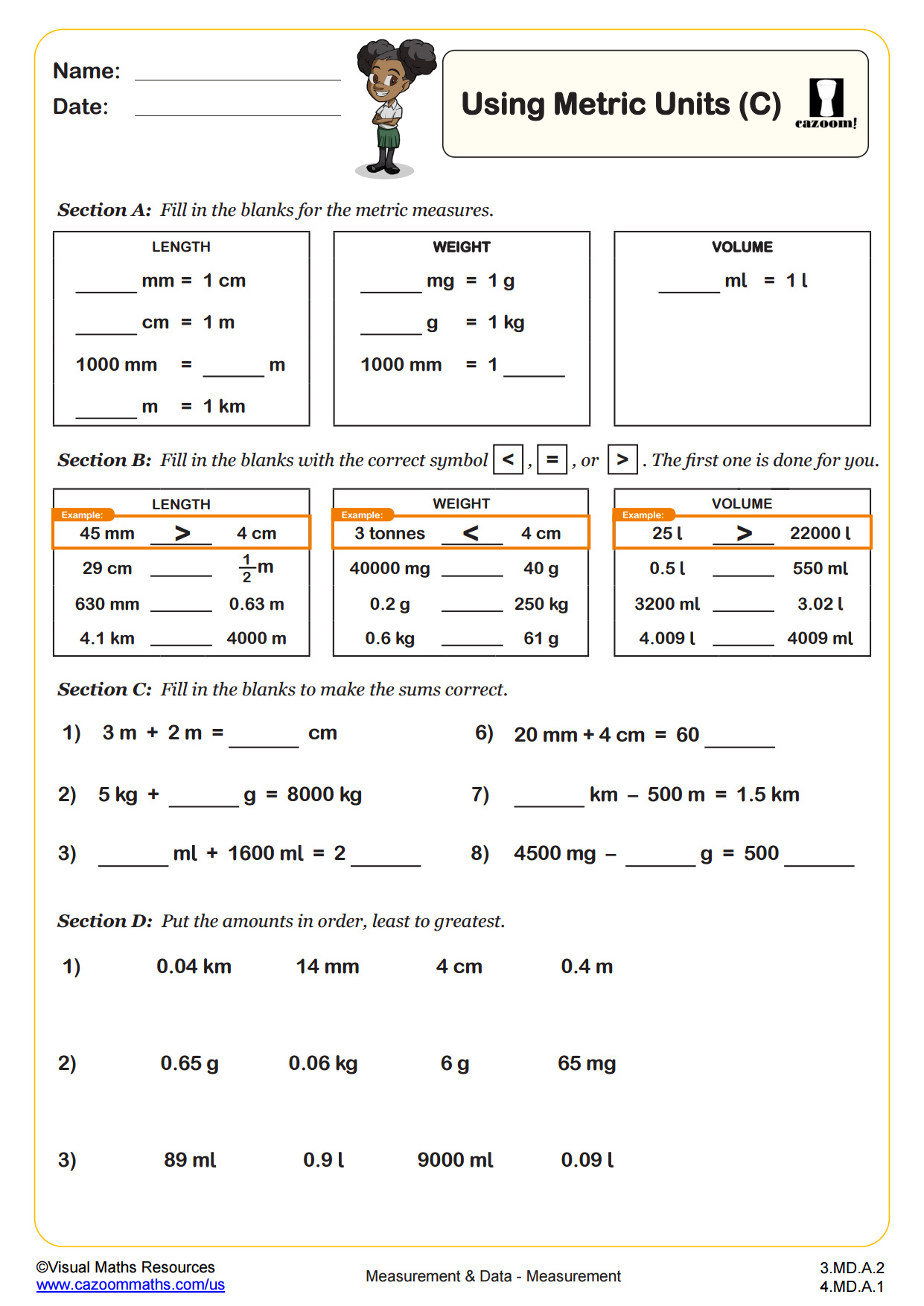
Using Metric Units (D)
Grades: 3rd Grade, 4th Grade
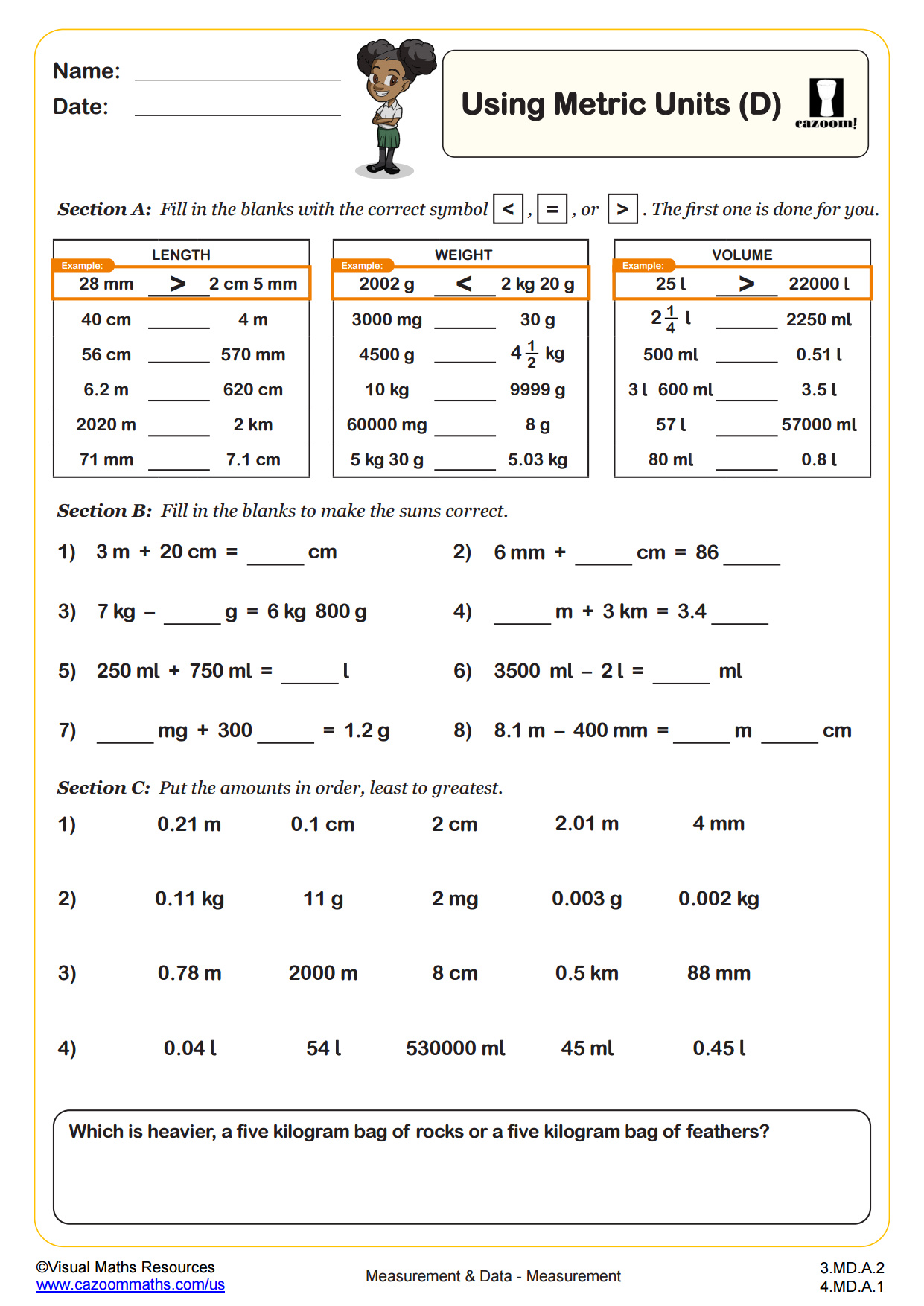
Angles at a Point
Grades: 4th Grade
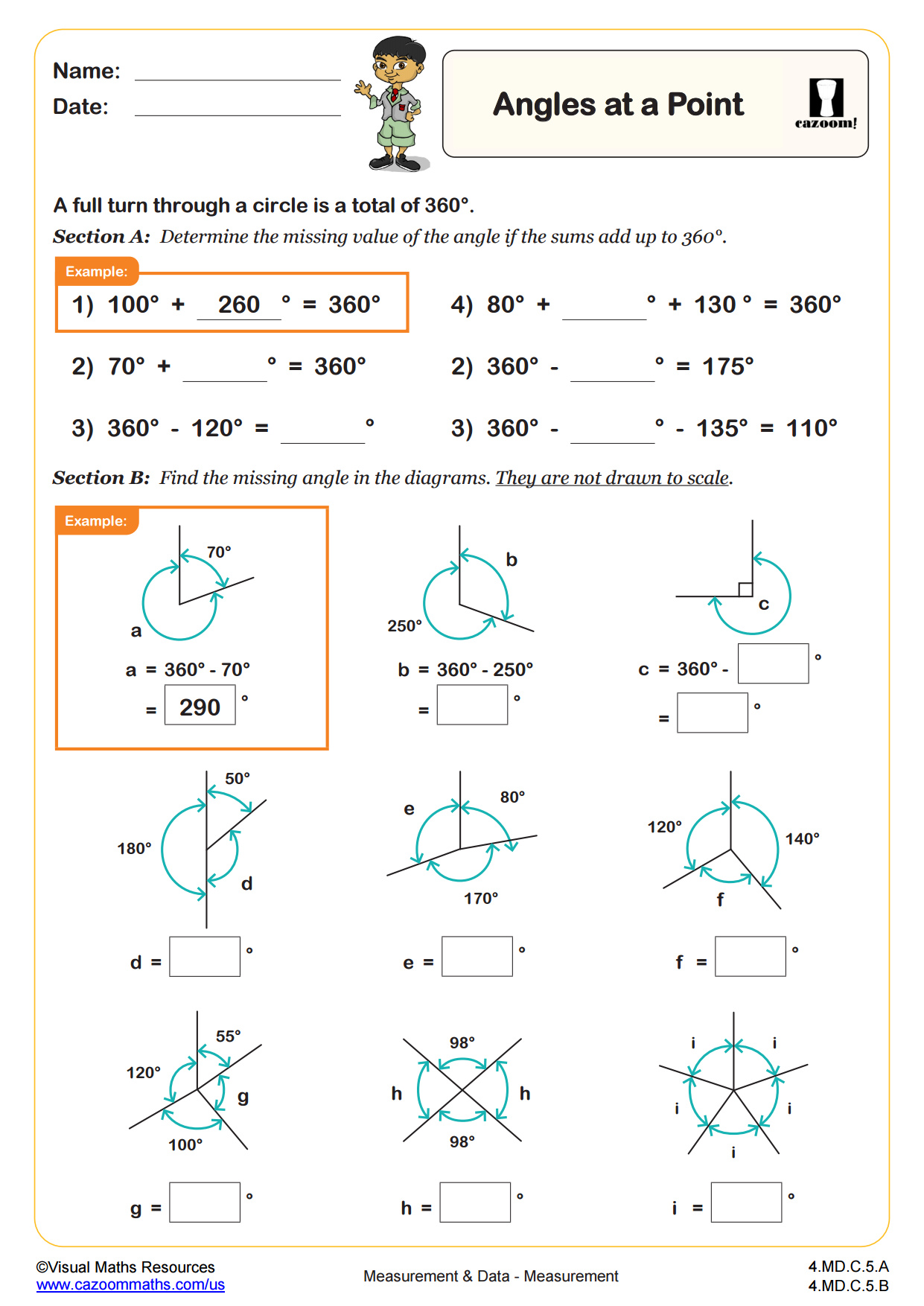
Calculating Angles
Grades: 4th Grade
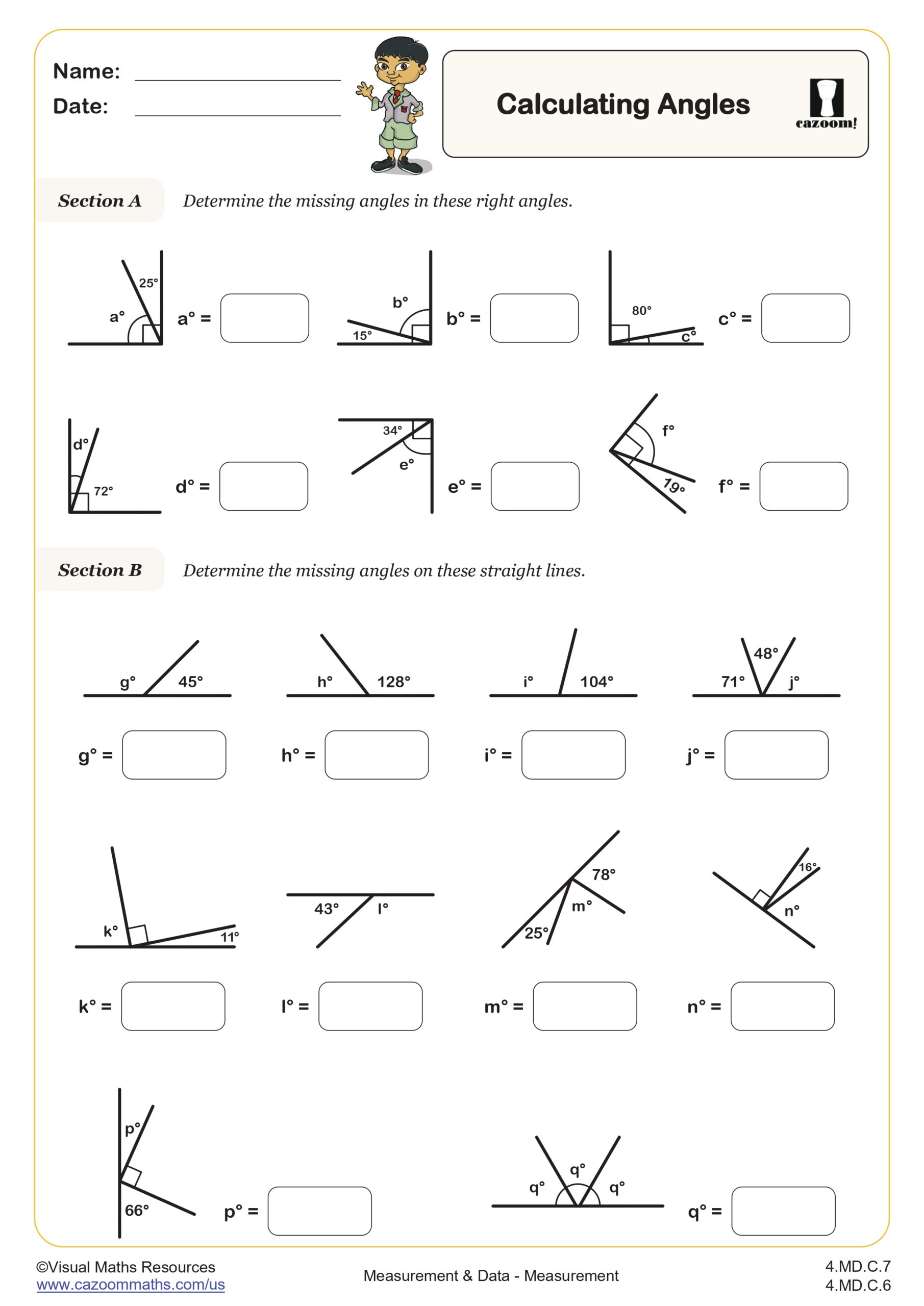
Drawing and Measuring Angles
Grades: 4th Grade
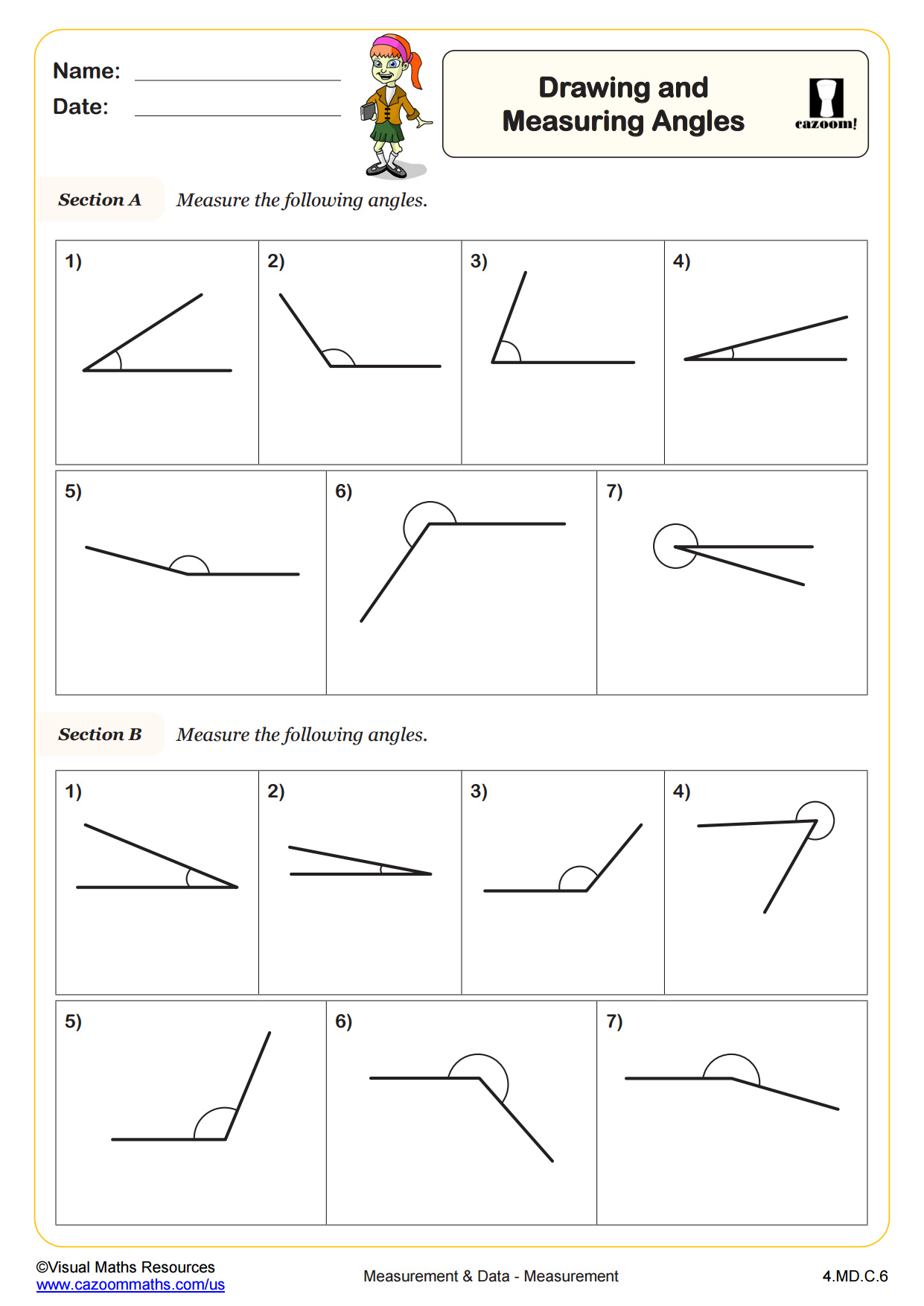
Estimating Angles
Grades: 4th Grade
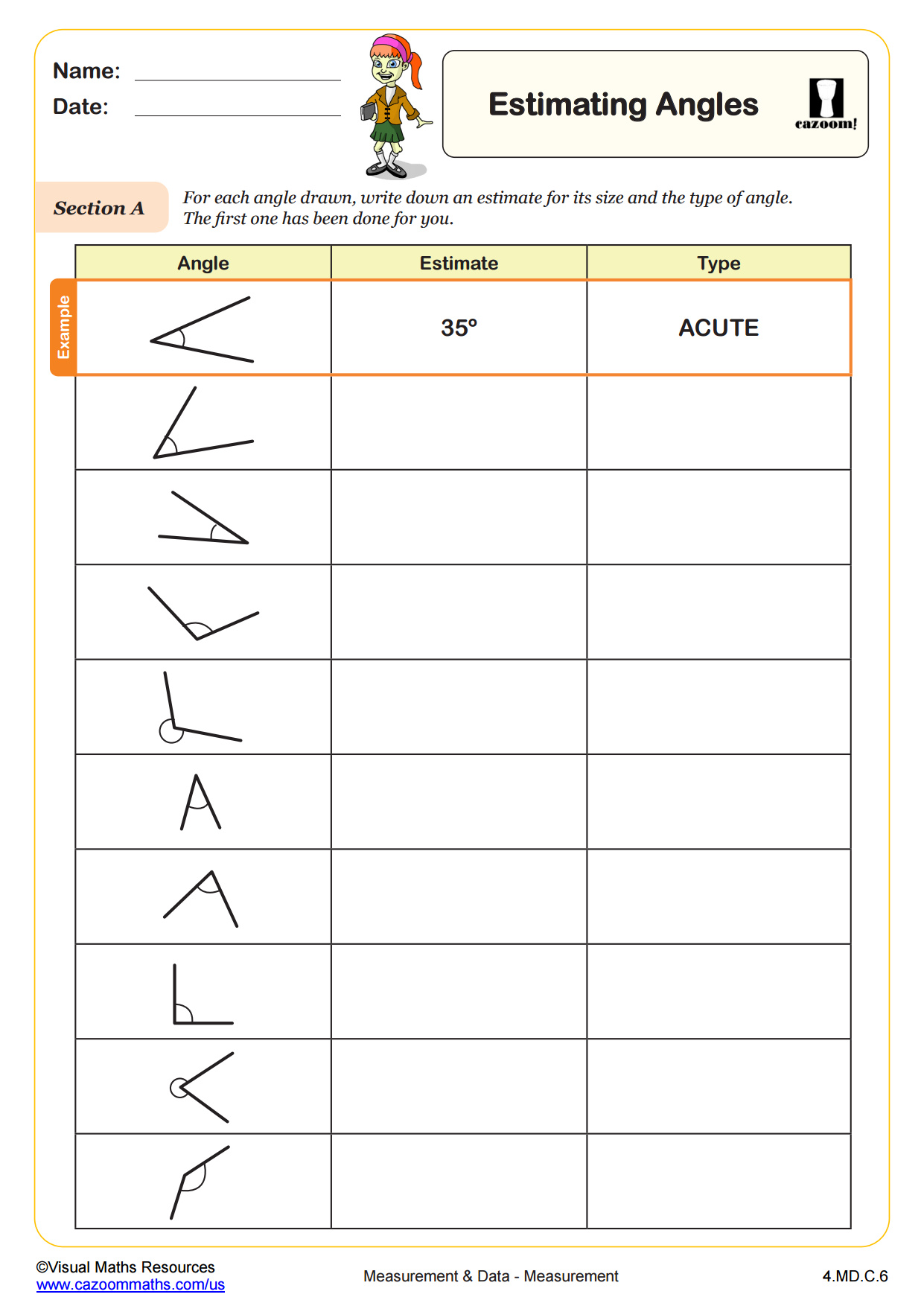
Kilometers and Meters
Grades: 4th Grade, 5th Grade
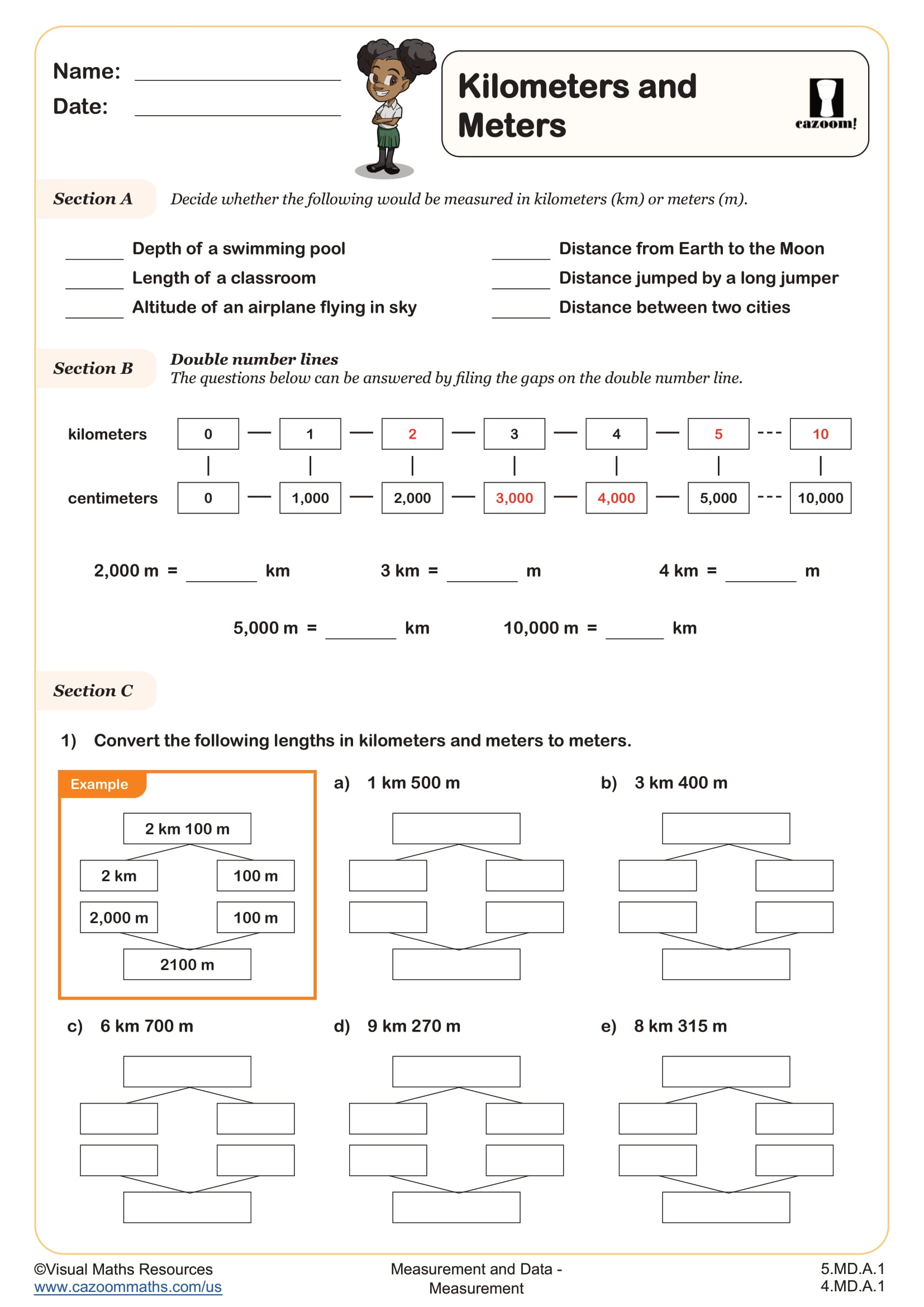
Metric Conversions
Grades: 4th Grade
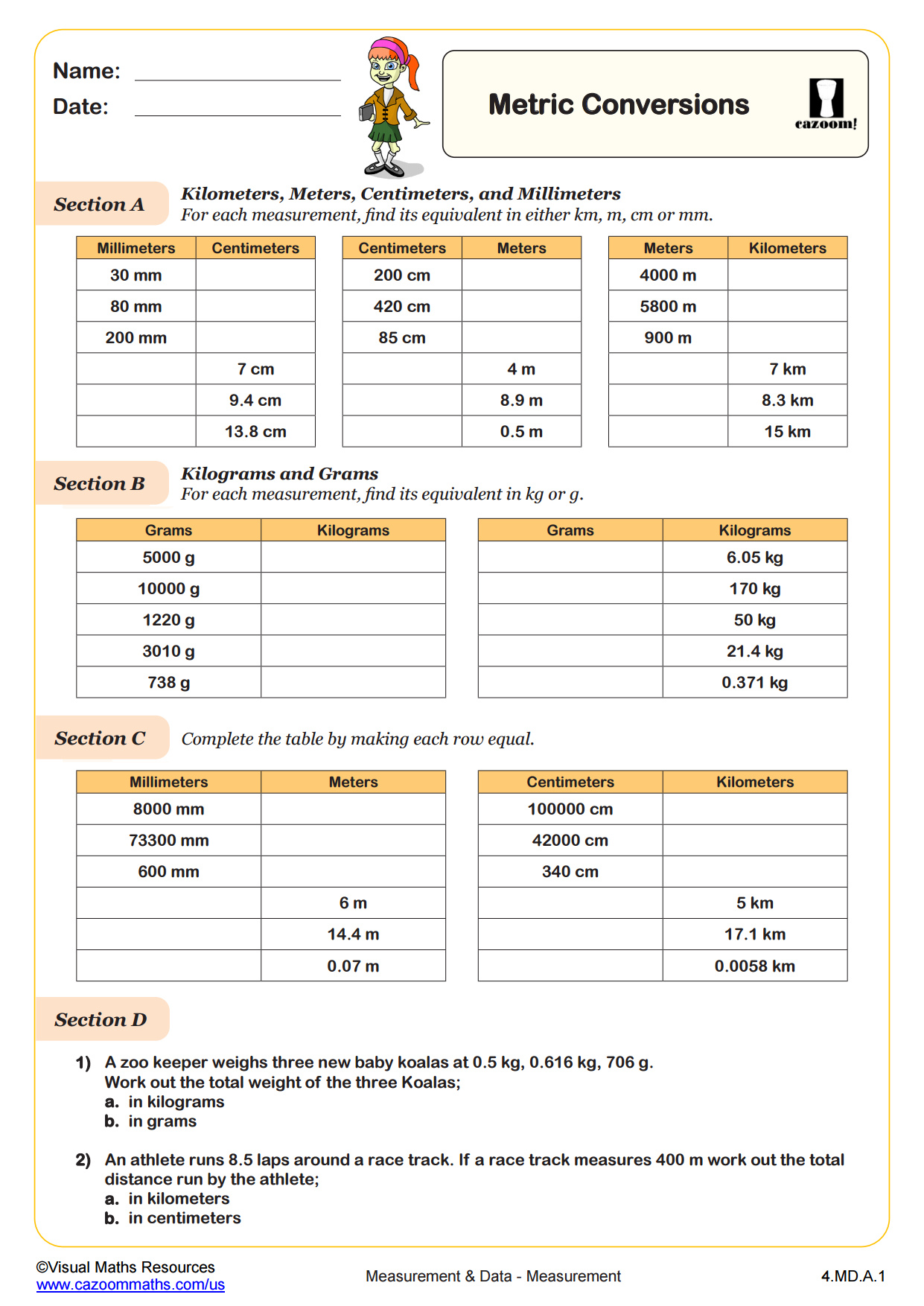
Turning Angles (A)
Grades: 4th Grade
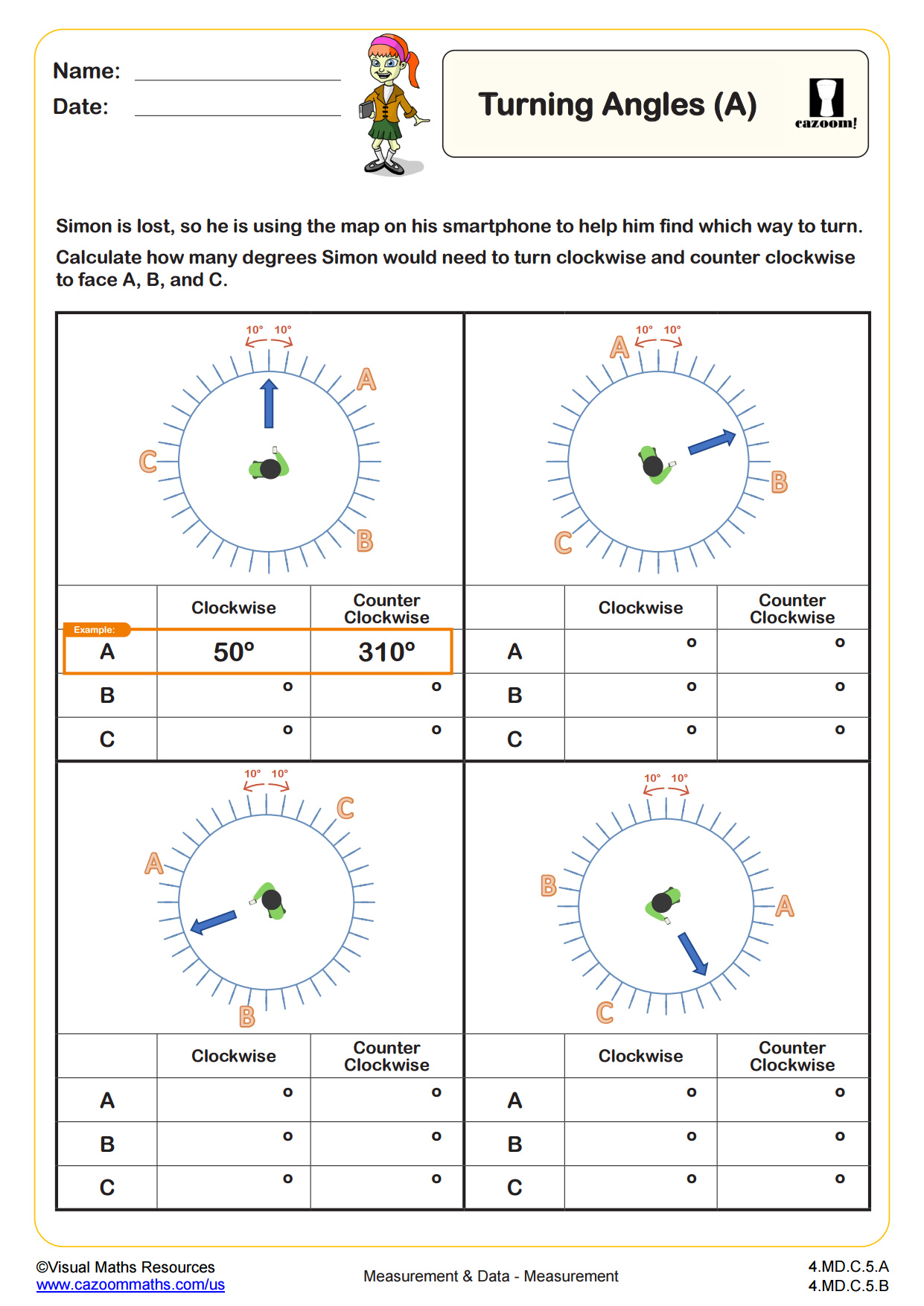
Turning Angles (B)
Grades: 4th Grade
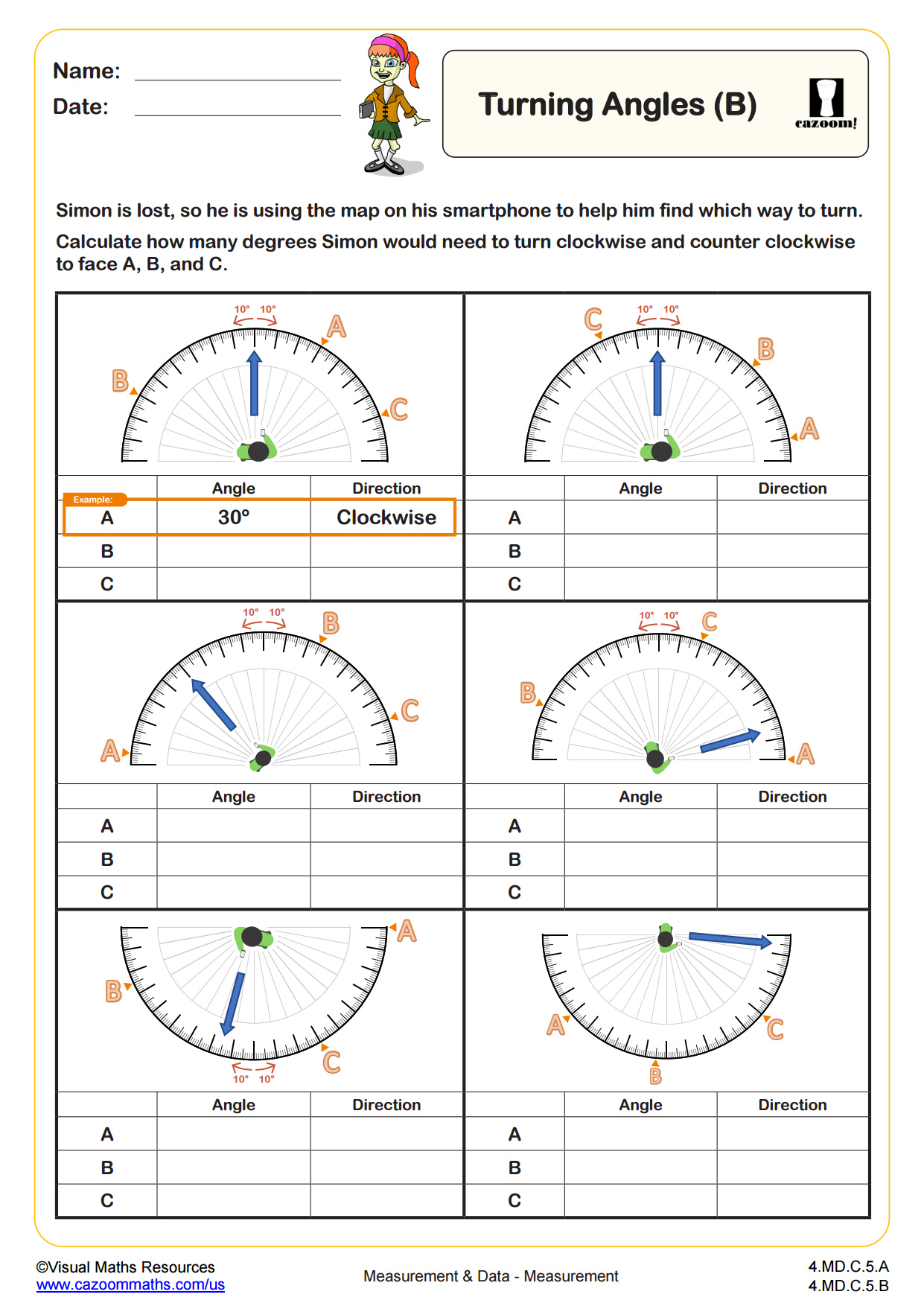
Converting Units - Area
Grades: 5th Grade, 7th Grade
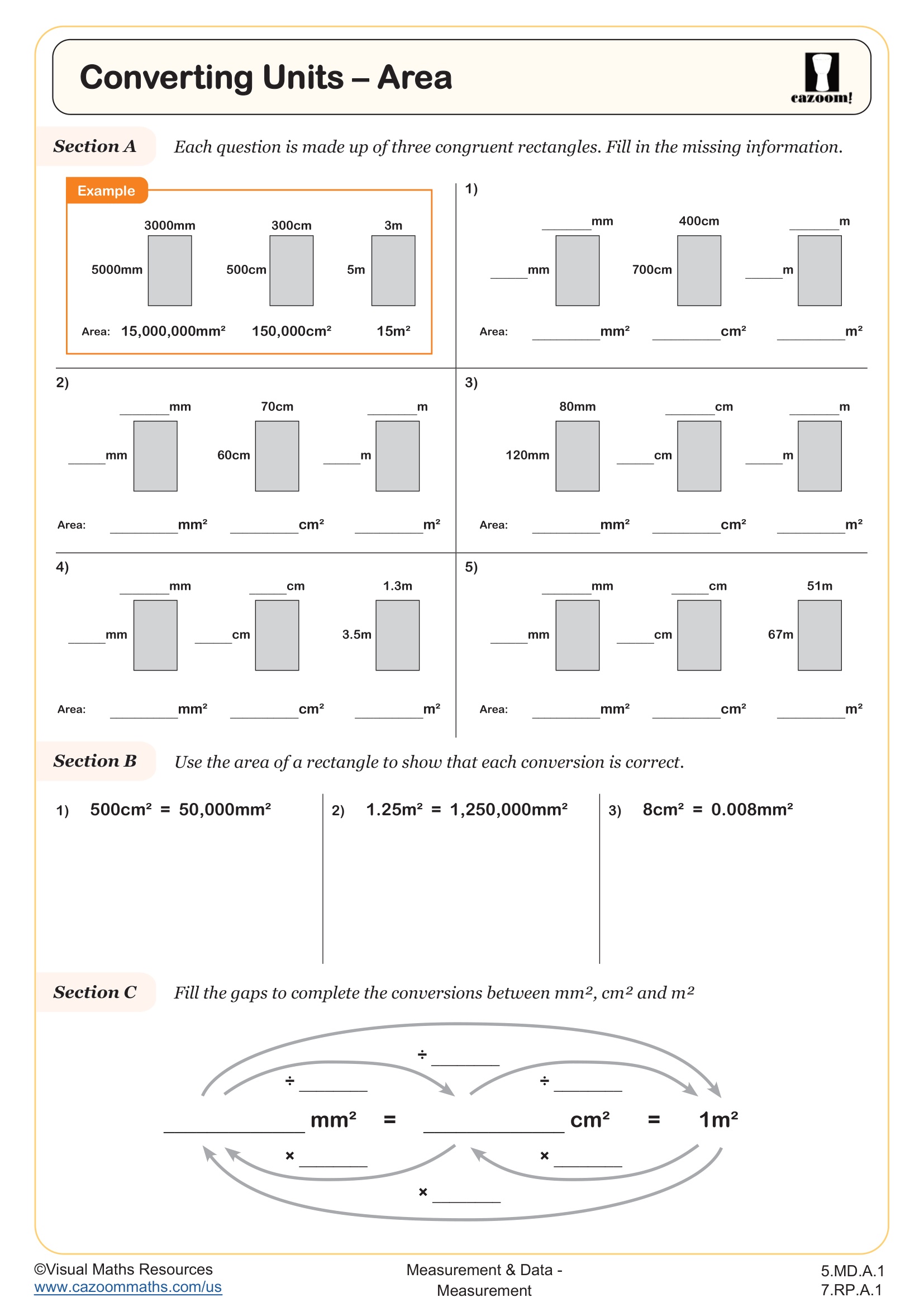
Converting Units - Volume
Grades: 5th Grade, 7th Grade
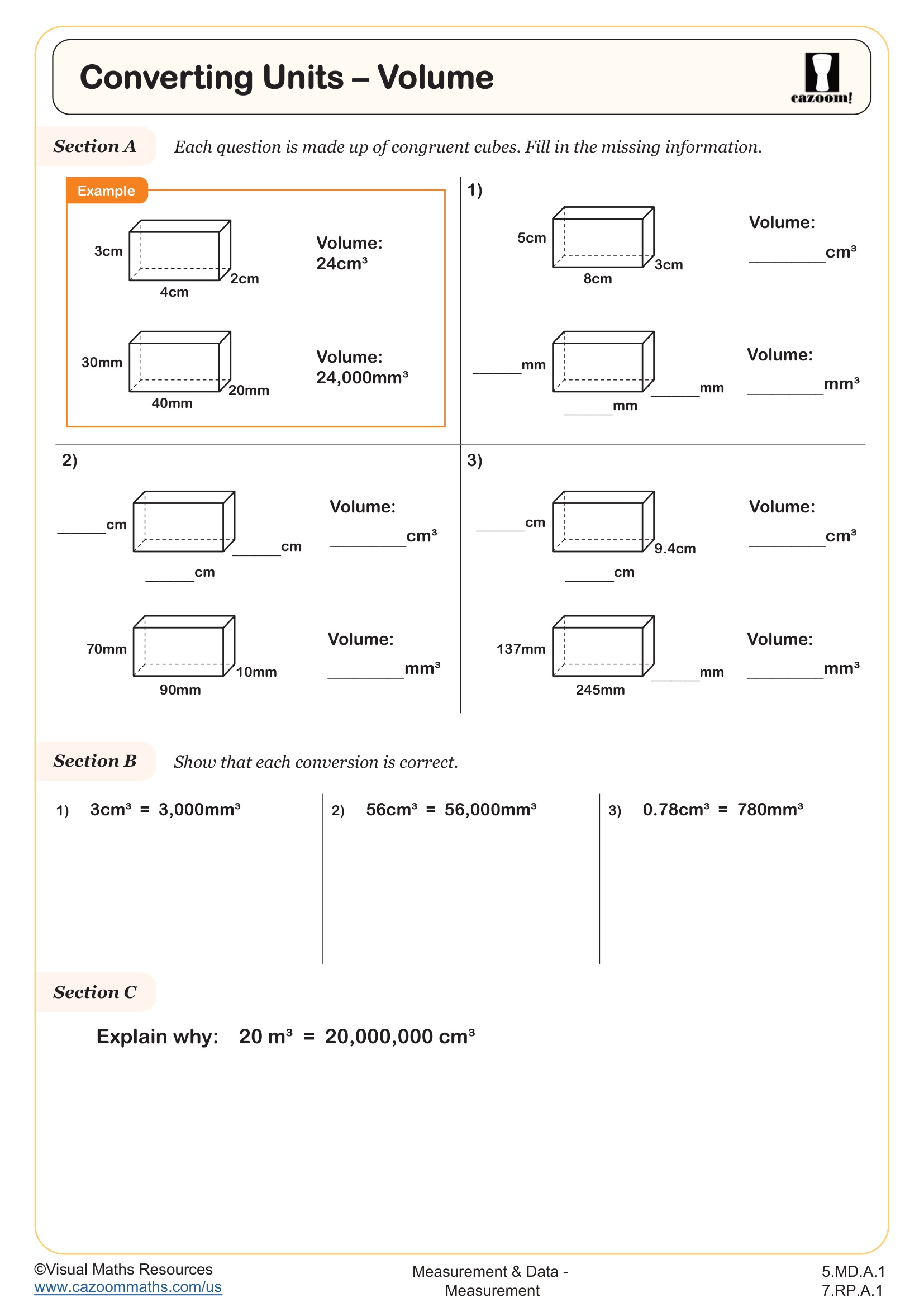
Printable PDF Measurement Worksheets with Answers
Download our printable PDF measurement resources to give students the push they need when learning different concepts of measurement equations. Our math experts have specifically curated these resources in a way that your children can master the measurement worksheet using simple sums with clear and easy-to-understand instructions. Hence, all of our measurement resources are great for building a sense of math and early problem-solving skills.
What Is Measurement in Math?
The concept of Measurement is one of the core concepts of math. Measurement in math means figuring out how big, long, heavy, or full something is. We use units like inches, centimeters, pounds, or liters to describe size. Your students will learn how to use rulers, scales, clocks, and measuring cups. This skill will help them understand how to collect and use numbers in real life. Learning measurement prepares students for everyday tasks and supports future math topics like geometry and data.
CCSS-Aligned Measurement Questions
Our worksheets include Common Core-aligned questions to support standards in early grades. Students solve problems involving measurement tools, unit conversions, and time-telling. They read thermometers, measure liquids, and choose the correct units for different objects. These activities reinforce math vocabulary and promote accuracy. By working through varied tasks, students develop a strong foundation in math measurement skills used throughout school and beyond.
Real-Life Uses of Measurement
Measurement is used everywhere—when cooking, shopping, building, or getting dressed. Students need to know how to tell time, weigh items, or choose the right size. Our worksheets use everyday examples like filling a bottle or measuring a table to show how measurement is useful. These real-world tasks help learners connect math with their surroundings and make learning meaningful.
Prerequisite Knowledge Before Learning Measurement
Before starting these worksheets, students should be able to:
• Count and compare numbers
• Understand size words like “longer,” “heavier,” or “fuller”
• Read and write numbers to 100
• Recognize basic tools like rulers and clocks
These skills help students approach measurement with confidence. Our worksheets build on these basics and introduce more complex ideas with simple, guided practice.